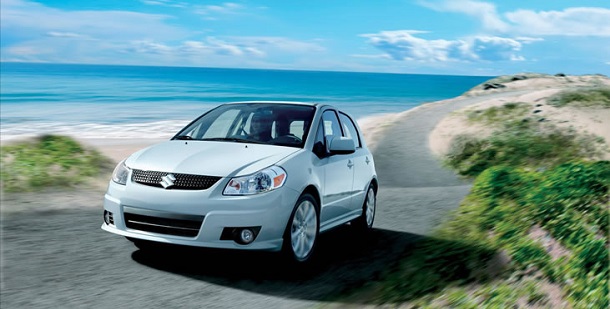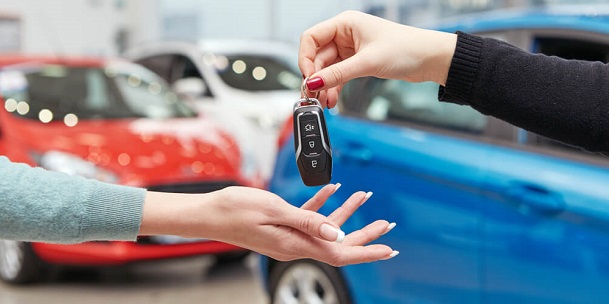
Buying a new vehicle is exciting, and car finance can make getting your dream car more affordable. Whether it is your first car or it is time to trade in your old banger for a new ride, there are a few things to watch out for. Finance agreements can be complicated to get your head around, and with so many options available it can be confusing to know what you’re signing up for.
All these options combined with an over-enthusiastic car salesperson can result in you paying out more than you needed to or falling into one of the many car finance traps. Before you head out on the hunt for your new wheels, read our expert guide on the pitfalls to avoid when buying a car on finance.
Shop Around For Finance First
Many people buying a car on finance make the mistake of thinking about exactly how much they can afford to pay each month. It is important to remember that your monthly payments aren’t buying the car itself; they are buying a cash lump sum that will be used to buy a car.
The amount of cash that you can afford to borrow is entirely dependent on the interest rate you are offered and how long you want to pay off the agreement.
When you head out car shopping with just a monthly figure in your head of what you can afford, you can easily set yourself up as a target for high-pressure sales techniques from the dealer. It is common for car shoppers to leave having paid more than they initially planned and with a finance deal with a very high-interest rate.
In order to avoid getting caught in this trap, be sure to do your research and compare the various car finance options available before you head out to the dealers. This way, you will have a good idea in your mind of the sort of interest rates, monthly payments and term length you can get for your budget and won’t get caught up in the moment.
It is possible to get pre-approved for a car loan before you head out car shopping. This can give you an excellent starting point, and budget, as you can use it to compare the finance offers the dealership gives you. If you are pre-approved for a loan, you are under no obligation to accept it, but it is good to have it as a back-up when you head out car shopping.
Don’t Be Afraid To Negotiate
Many of us don’t feel comfortable haggling sales associates down from an advertised price, but a car dealership is certainly the place to do it. The chances are that the cars on the forecourt have been marked up so that the dealership will be making a hefty profit on what they purchased the vehicle for.
They also get marked up in anticipation that buyers will be looking to get a deal on the sticker price. Be clever with your negotiating, and instead of trying to knock down the asking price, make an offer that is based on what the new vehicle will have cost to the dealership. This can put the negotiation in your favour as opposed to in favour of the dealer. Do some online research to help you work out the rough figures of what the dealership is likely to have paid.
If you are trading in an old vehicle as well as purchasing a new one, always remember that these are two separate transactions. Many salespeople will try and mix them in together to confuse buyers but keeping them separate will often get you a better deal. Negotiate the cash price of your new vehicle, and then negotiate the trade-in price of your old one separately.
Don’t Buy On Your First Dealership Visit
Car dealers will want every customer to drive away with a new vehicle on their first visit because it prevents the chance of their customers going comparison shopping. If you don’t have the opportunity to compare all the various deals available from other dealerships, then you are likely to end up paying over the odds.
These comparisons should not just be on the price of the vehicle itself, but the cost of the finance agreement and the value of any vehicles you are trading in.
It can be easy to get caught up in the moment and get excited about the prospect of driving off immediately in your new car. However, it is important that you know exactly what you are signing before you agree to any finance deals. Car dealerships may put pressure on to get you to sign a finance agreement and make a purchase on your first visit but stick to your guns and compare all the options available to you.
Do some pre-shopping on the internet before you head out to the dealerships. This way, you can find out more about the vehicles they have available, the type of finance deal you might be offered and how they compare to others.
Be Aware Of Potential Losses
When you choose to buy a car on finance there are some potential losses that you should be aware of before you sign up. One of the main areas for a possible loss is if you are involved in an accident or if your vehicle is stolen. Car insurance companies will only pay out the vehicle’s worth at the time of the accident or theft, and not what the car cost you to buy.
When you have a finance agreement, this means that the pay-out is likely to be substantially lower than the finance you are still required to pay. You could end up in a situation where you have to pay off a finance agreement for a vehicle you no longer have. One way to resolve this issue is gap insurance, which covers you for the difference between the amount paid out by car insurance and the amount left of your finance.
Always consider taking out gap insurance if you are purchasing a new vehicle on finance, as a brand-new vehicle will lose its value very quickly after it is purchased. This is when you are most likely to have a big difference in the amount an insurance company would pay out, and the amount you are paying for your finance agreement.





